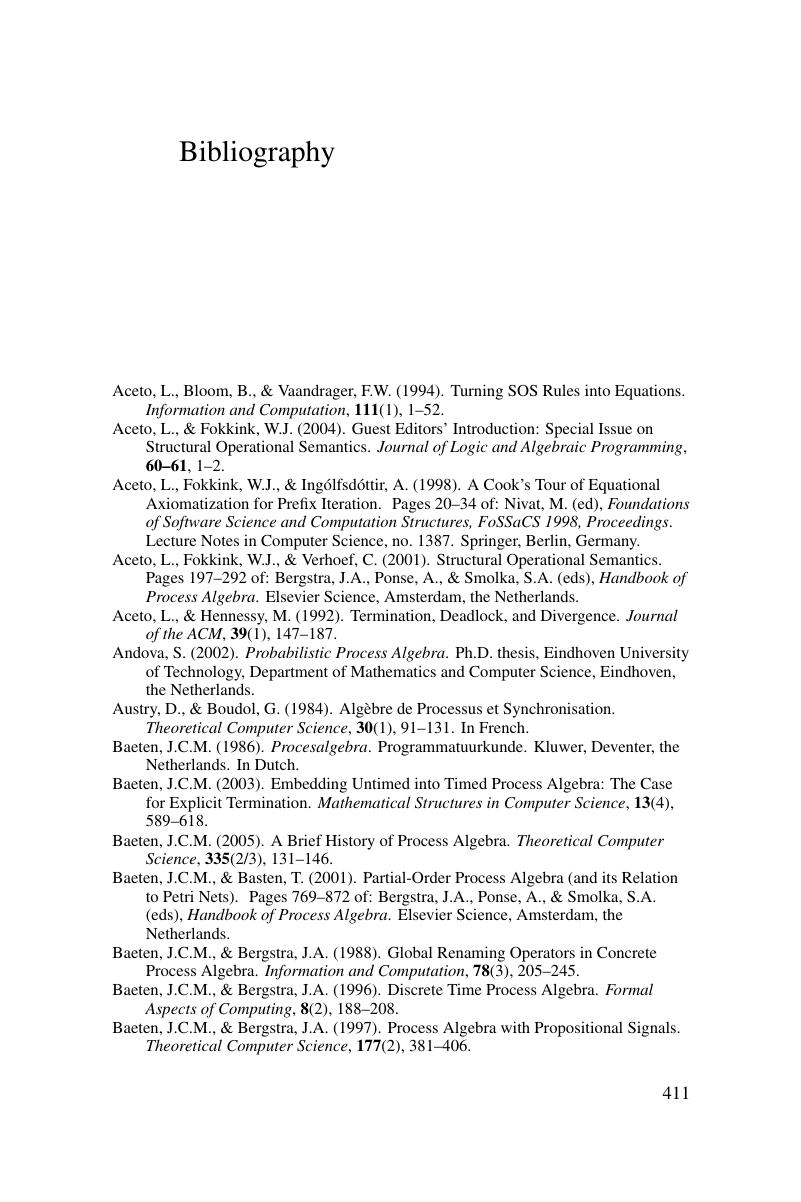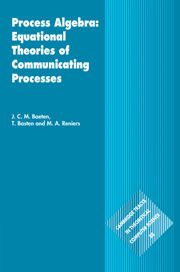Book contents
- Frontmatter
- Contents
- Foreword
- Foreword
- Foreword
- Preface
- 1 Process algebra
- 2 Preliminaries
- 3 Transition systems
- 4 Basic process theory
- 5 Recursion
- 6 Sequential processes
- 7 Parallel and communicating processes
- 8 Abstraction
- 9 Timing
- 10 Data and states
- 11 Features
- 12 Semantics
- Bibliography
- Index of Symbols and Notations
- Index of Authors
- Index of Subjects
- References
Bibliography
Published online by Cambridge University Press: 05 July 2014
- Frontmatter
- Contents
- Foreword
- Foreword
- Foreword
- Preface
- 1 Process algebra
- 2 Preliminaries
- 3 Transition systems
- 4 Basic process theory
- 5 Recursion
- 6 Sequential processes
- 7 Parallel and communicating processes
- 8 Abstraction
- 9 Timing
- 10 Data and states
- 11 Features
- 12 Semantics
- Bibliography
- Index of Symbols and Notations
- Index of Authors
- Index of Subjects
- References
Summary

- Type
- Chapter
- Information
- Process Algebra: Equational Theories of Communicating Processes , pp. 411 - 420Publisher: Cambridge University PressPrint publication year: 2009

